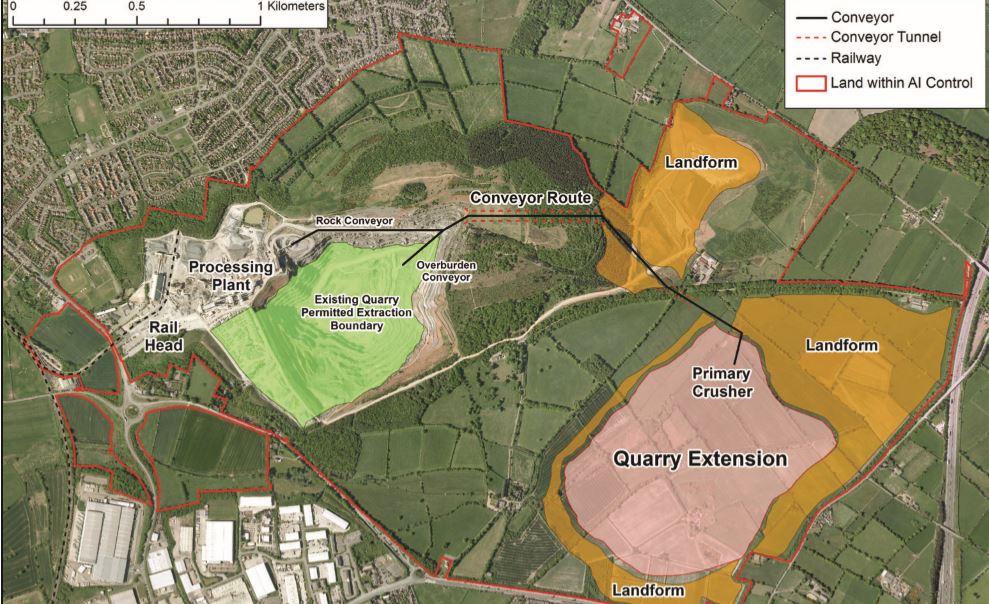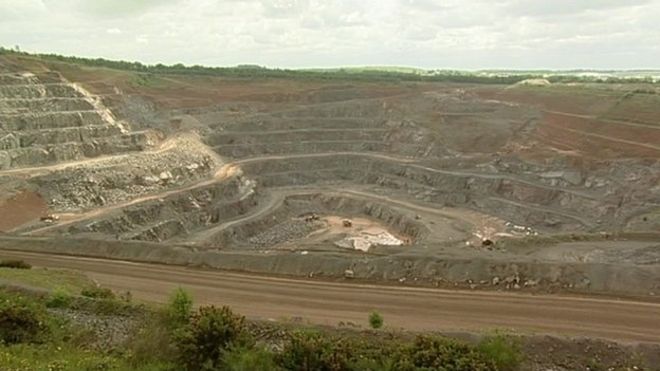
Boring Job? Not a Bit!
23/03/2018 - posted in UncategorisedHBPW Geotechnics is playing its part in keeping one of Britain’s most important stone quarries working at full tilt until the middle of this century and beyond.
Bardon Hill Quarry in Leicestershire has been operational for more than 150 years, but remaining permitted reserves within the current 74 acres site will be exhausted by summer 2020.
However, thanks to an approved expansion programme, the rail-linked facility, considered to be of national economic importance, is on course to triple in size, ensuring its future for another four decades.
Graduate Engineer, Edward Needham said: “Bardon Hill is responsible for the distribution of more than three million tonnes of crushed rock every year, with a further 142m tonnes of reserves in an area just half a kilometre from the existing site.

Bardon Quarry
“But before this can be quarried over the next 40 years, a Primary Crusher Building needs to be erected at the base of the new development area so that output can make its way to the existing site’s processing facility via a series of conveyor belts and transfer towers.”
HBPW has designed the civils infrastructure to support the new conveyor system, transfer towers and associated facilities.
“This structure not only includes a mineral conveyor for the primary quarry product, but an additional conveyor to transport ‘over-burden’ or waste material, back to the original quarrying area for use as fill.
“One of the transfer towers will effectively bridge these two separate conveyors and from a geotechnics perspective, we have been drilling boreholes to a depth of approximately 30m at the base of where the particular transfer tower will be located.

Roman aqueduct, Segovia
“The ideal location for the tower has, of course, already been identified, however, we need to be sure that the ground is not only suitable to take the structure, but also able to bear the necessary tower weight, hence the borehole investigations.
“Assuming it is, then our Point Load Tests will also provide HBPW’s civils team with the necessary information to complete the various structural engineering designs.
“This whole process is key to the success of the entire project and, as with so many major civil engineering projects, geotechnics plays a major part in ensuring that ground conditions are capable of supporting large ambitions!”
